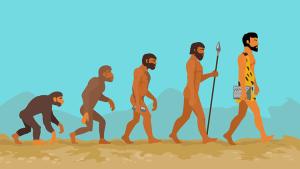We will find out why animals have penis bones and humans do not.
It was not like that before. Researchers traced the evolutionary time to the discovery of the penis bone , the scientific name is baculum , which first appeared 145 million years ago when mammals and did not have a placenta branched off.
This makes sense since very ancient times, our ancestors had baculum. And on the way to human evolution, they lose it. The researchers date that date to 1.9 million years ago, coincident with the time when humans started to stand upright.

In the course of evolution, the baculum in humans has disappeared.
The reason we lose the baculum may be due to a change in the way we mate. Baculum length in primates is strongly related to penetration time, which is the length of time the penis is in the vagina. The average human penetration time is just under 2 minutes, so it doesn’t seem like we need bones for extra support.
There are primates like bonobos that mate only 15 times a time, but they still have baculum. This may be because they are polygamous primates, with many males and females paired together. Competition is tough so they need extra bones to support them.
In other polygamous species, the extra bones help them prolong the mating time, so that other males don’t get a chance to peek at their mates. They are literally blocking each other.
For comparison, humans suffer less competition with monogamy . That, along with the duration of sex, could be the reason our baculum is gone.
Hearing this news may put you off, but there’s also some good news that can cheer you up right here.
Baculum comes in all shapes. In some species, the baculum is quite large and somewhat intimidating like the 60cm long baculum of a walrus. Most animals are not like that. Chimpanzees have a baculum about the size of a human fingernail.
In fact, even without that extra bone, humans still have the largest male sex organs of any species of the human family.

